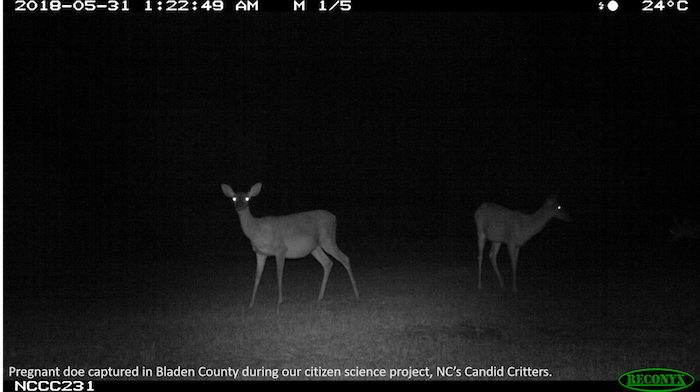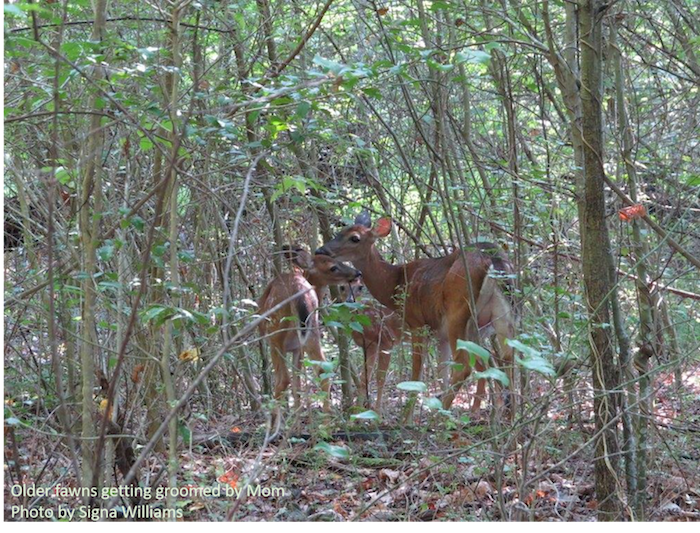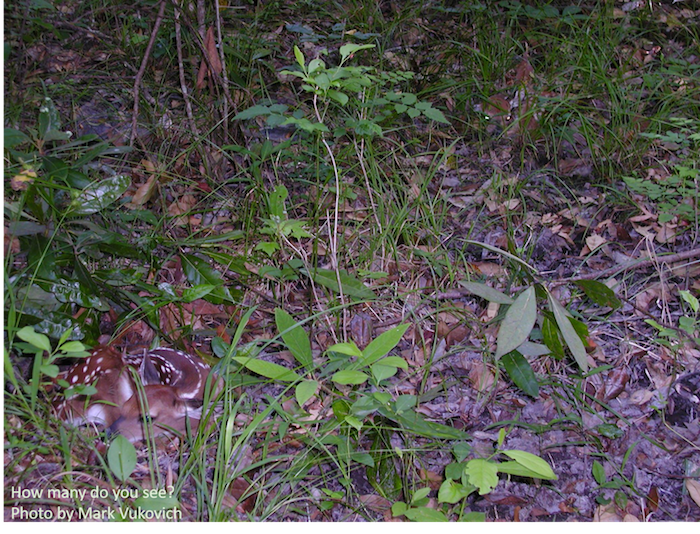What To Do If You Spot A Fawn
For immediate release ‐ June 04, 2020
Contact: Jessica Wackes, 919.707.9850. Images available upon request

Spring is the time for renewal and (re)birth. This is true for many of our native mammals, including white-tailed deer. Mating occurs in the fall. And after a gestation period of about 200 days, fawns begin to be born across North Carolina. As early as mid-May fawns start showing up in the eastern part of the state, while the birth of fawns in the western mountains may not happen until June.
Generally, a single fawn is born, while older does may have twins, and sometimes triplets. Access to good quality food sources may also contribute to multiple births. The entire birth takes only a few minutes and is often done while the doe is standing. At birth fawns weigh 4 to 8 pounds and are fully furred. They typically stand within an hour of birth and can then begin to nurse. While fawns begin to follow their mothers at about one month and are able to forage some, weaning is typically done by four months of age.

For the first few days after birth the mother will leave her fawn(s) for a few hours at a time in order to forage. While this may seem to leave the babies vulnerable to predation, they are actually quite safe. During these early days of life fawns have no scent. And their spotted coats provide excellent camouflage in the dappled sunlight of a thicket or high grass. In the case of twins or triplets, each fawn will bed down apart from one another, possibly adding another level of protection. Whether by instinct, or because of some communication from their mothers, fawns will remain still, making themselves as flat as possible, until the mother returns. Maybe you’ve been fortunate enough to see a fawn like this. And even though we see color (unlike many potential predators), they really are hard to spot.
Fawns will typically stay with their mothers for a year. Yearling bucks will then leave their mother and go off on their own. Young does may stay with their mothers for two years.

If you do see a fawn alone, either lying down in hiding or walking alone, do not assume that it has been orphaned or abandoned and is in need of being rescued. Most likely the mother is nearby and will return to her babies when it is safe to do so. If a fawn is quiet and calm, it is okay. Please never remove a fawn from its natural setting. There is only one condition under which a fawn may be in need of human help. If you see a fawn in the exact place for more than one day, if it is crying loudly, if it is visibly thin or if there is evidence of diarrhea it may be orphaned. If this is the case, you still should not move it, but rather contact a licensed wildlife rehabilitator for directions on how to proceed.
Across North Carolina fawns are, or soon will be, on the move. While driving in our state, whether in rural or urban areas, country roads or bigger highways, be on the lookout for fawns and help keep them safe.
By Lisa Gatens, Mammalogy Collection Manager
For more information about our upcoming activities, conservation news and ground-breaking research, follow @NaturalSciences on Instagram, Twitter and Facebook. Join the conversation with #visitNCMNS.

